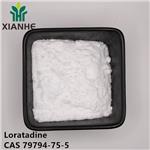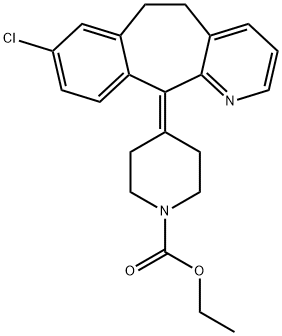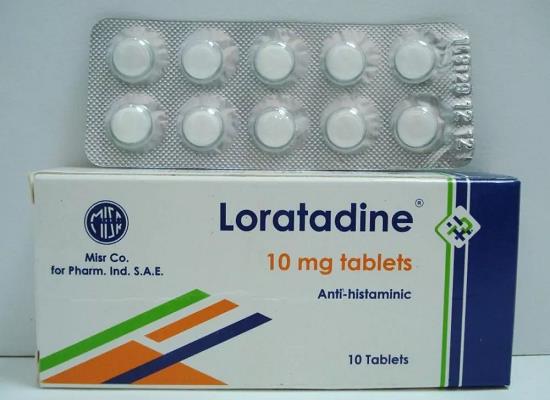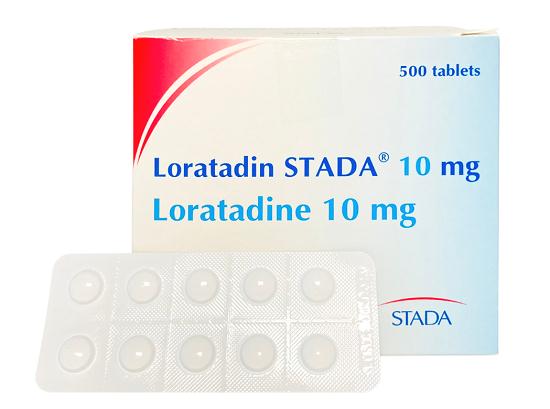What is the Mechanism of action of Loratadine?
Introduction
Loratadine, 4-(8-Chloro-5,6-dihydro-11H-benzo[5,6]cyclohepta[1,2-b]pyridin-11-ylidene)-1-piperidinecarboxylic acid ethyl ester, is an antihistamine drug with long-acting effects and has limited selectivity for peripheral H1 receptors. It is widely used to prevent allergic diseases such as rhinitis, chronic urticaria, and asthma[1].

Structure
Loratadine is a derivative of azatadine. Its structure resembles that of the tricyclic antidepressants. It is more polar and less basic than the parent compound because of adding a carboxymethyl ester moiety. This modification decreases the central nervous system penetration of the drug. Loratadine does not contain an ethylamine grouping and, therefore, has no structural resemblance to histamine.
Pharmacokinetics
Loratadine is relatively specific for the H1 receptor; however, ,there may be some anti-muscarinic, anti-α-adrenergic, anti-serotonergic, and anti-leukotriene activity at higher doses. It is extensively metabolized by first-pass Mechanism in the liver, generating descarbethoxyloratadine, an active antihistamine four times more potent than Loratadine. Peak serum concentrations of Loratadine occur 1–2 hours after dosing, and peak serum concentrations of descarbethoxyloratadine appear 1.5–3.5 hours after dosing. The elimination half-life of Loratadine is 8–14 hours, and its metabolite is 17–24 hours, accounting for the 24-hour duration of the drug's action. Wheal inhibition is detected at 1.5 hours after administration, reaches a peak at 4–6 hours, and may last 36–48 hours. There is an approximate 50% diminution in wheal and flare after a single 10-mg dose[2].
Mechanism of action
Loratadine exhibits specificity and selectivity for peripheral H1 antagonistic activity and competes with free histamines for the active sites. As such, blocking the active sites for the endogenous histamines provides short term relief to allergens translated as symptoms such as nasal congestion and watery eyes as a result of histamines exposure. However, Loratadine only shows limited affinity for cholinergic receptors and in-vitro barely any alpha-adrenergic blocking activity is exhibited. Loratadine has also been shown to prevent the release of histamine and leukotrienes from animal mast cells and the discharge of leukotrienes from human lung sections.
[1] Jiwon Jang. “Anti-Inflammatory Activities of an Anti-Histamine Drug, Loratadine, by Suppressing TAK1 in AP-1 Pathway.” International Journal of Molecular Sciences (2022).
[2] Loratadine - an overview | ScienceDirect Topics https://www.sciencedirect.com/topics/pharmacology-toxicology-and-pharmaceutical-science/loratadine
References:
[1] JIWON JANG. Anti-Inflammatory Activities of an Anti-Histamine Drug, Loratadine, by Suppressing TAK1 in AP-1 Pathway[J]. International Journal of Molecular Sciences, 2022. DOI:10.3390/ijms23073986.You may like
Related articles And Qustion
See also
Lastest Price from Loratadine manufacturers

US $0.00-0.00/KG2025-09-30
- CAS:
- 79794-75-5
- Min. Order:
- 1KG
- Purity:
- 98%min
- Supply Ability:
- 30tons/month

US $0.00/kg2025-04-25
- CAS:
- 79794-75-5
- Min. Order:
- 1kg
- Purity:
- 0.99
- Supply Ability:
- 1000kg





